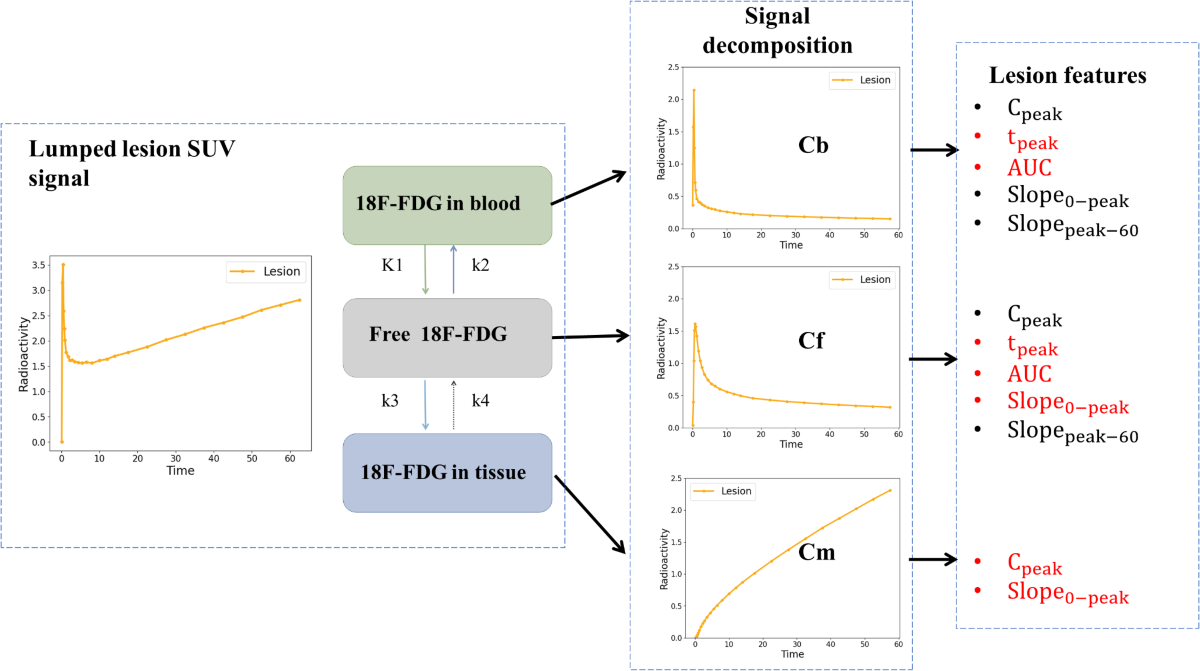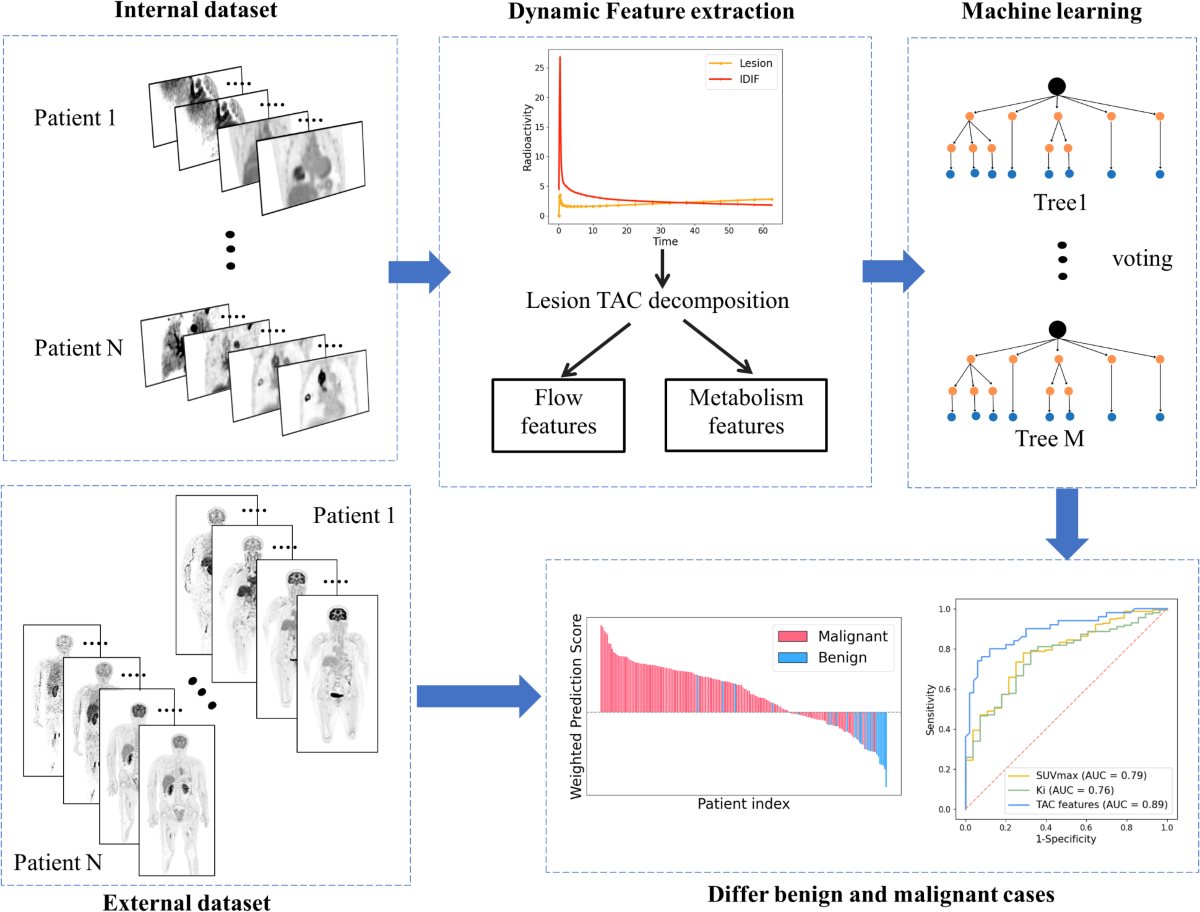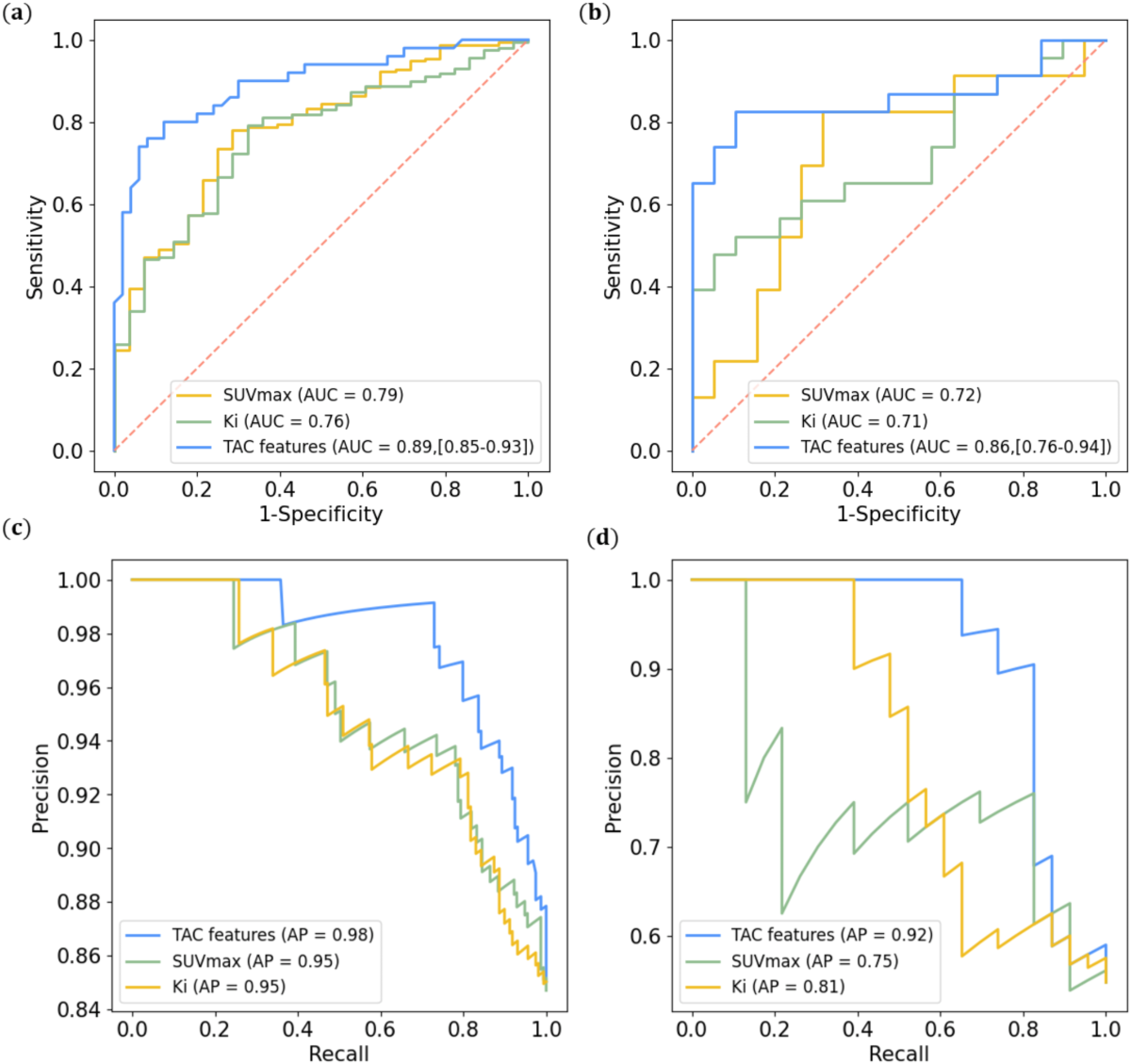Article Review: Leveraging machine learning with dynamic 18F FDG PET CT integrating metabolic and flow features for lung cancer differential diagnosis
 Aldo Yang
Aldo YangObjectives
This study proposes an explainable machine learning (ML) model using dynamic features extracted from 18F-fluorodeoxyglucose (18F-FDG) Positron Emission Tomography/Computed Tomography (PET/CT) to differentiate between benign and malignant lung lesions. The core contribution is demonstrating that combining features derived from kinetically decomposed Time Activity Curves (TACs) - representing metabolism and blood flow components - achieves significantly better diagnostic performance than conventional metrics like maximum Standardized Uptake Value (SUVmax) or net FDG influx rate (Ki).
Methodology
The methodology involves:
- Acquiring 60-minute dynamic 18F-FDG PET/CT scans.
- Extracting lesion TACs and an Image-Derived Input Function (IDIF) from the descending aorta.
- Decomposing the lesion TAC into blood (Cb), free (Cf), and metabolism (Cm) components using an irreversible two-compartment kinetic model.

- Extracting 12 dynamic features from the decomposed TACs, including Area Under the Curve (AUC), time-to-peak (tpeak), maximum uptake (Cpeak), and slopes (Slope0-peak, Slopepeak-60).
- Selecting the 7 most relevant features using Least Absolute Shrinkage and Selection Operator (LASSO).
- Addressing data imbalance in the training set (187 patients) using smooth bootstrap oversampling.
- Training a bagging classifier (ensemble of decision trees) with the selected features to predict benign vs. malignant status.

- Using SHapley Additive exPlanations (SHAP) to interpret feature importance.
Results
The model's performance was validated internally (cross-validation on 187 patients) and externally (42 patients).
- Internal Cross-Validation: The ML model achieved an AUC of 0.89 (sensitivity=0.80, specificity=0.88), significantly outperforming SUVmax (AUC=0.79) and Ki (AUC=0.76) (DeLong test p<0.001 for both comparisons).

- External Testing: The model showed good generalization with an AUC of 0.86 (sensitivity=0.83, specificity=0.89), compared to SUVmax (AUC=0.72) and Ki (AUC=0.71).
- Prediction Score (PS): The model's PS demonstrated significantly better separation between benign and malignant groups (Cohen's effect size=1.71, p<0.001) compared to SUVmax (effect size=0.96) and Ki (effect size=0.81).

- Feature Importance (SHAP): Key contributing features included Cpeak of Cm, Slope0-peak of Cm, tpeak of Cb, AUC of Cb, and Slope0-peak of Cf.

Discussions
The study presents a valuable approach by leveraging features from decomposed TAC components (metabolism and flow) for lung lesion classification. Limitations and Suggestions:
- Reliance on Kinetic Modeling: While the study claims decomposed signals are less sensitive to errors than kinetic parameters like Ki, the decomposition itself still relies on kinetic modeling. The robustness of these decomposed features against common issues (e.g., inaccurate IDIF, motion, partial volume effects, noise in late frames) should be more systematically evaluated, perhaps under simulated error conditions.
- Comparison Scope: The comparison is limited to SUVmax and Ki. A more comprehensive evaluation could include models incorporating a combination of static PET features, kinetic parameters (like Ki itself), and potentially CT-derived radiomic features.
- Clinical Feasibility: Dynamic PET is time-consuming. Investigating whether a shortened acquisition protocol (e.g., first 15-30 minutes) can retain sufficient predictive power for this model would enhance its clinical applicability.
- Dataset Characteristics: The training dataset has a significant imbalance (164 malignant vs. 23 benign), although oversampling was used. The external test set has a different ratio (19 malignant vs. 23 benign). Further validation on larger, potentially more balanced datasets, including a wider variety of challenging benign lesion types (e.g., sclerosing hemangiomas), is recommended.
- Extended Applications: The potential utility of these dynamic features for predicting prognosis or treatment response, beyond binary classification, warrants investigation.
Subscribe to my newsletter
Read articles from Aldo Yang directly inside your inbox. Subscribe to the newsletter, and don't miss out.
Written by
